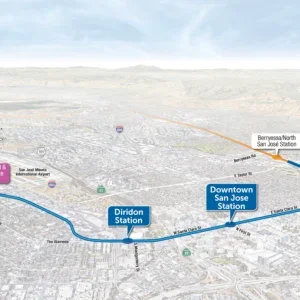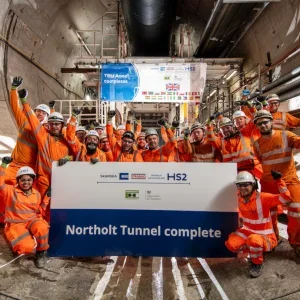First signs of tunnelling on the new US$1.4bn North-South underground metro line were visible in Amsterdam in late January 2003, as work began on the start shaft for the TBMs making the main drive from the heart of the city. TBM tunnelling of the 6.5m diameter tunnels will begin in early 2005.
For construction of the launch chamber, contractor Heijmans Beton-en Waterbouw began by removing bridge decking from the canal running up from the city’s grand central station to clear space for piling work. Sheet piling is now being driven to form a cofferdam, which will initially be filled with sand as a platform for construction of a concrete caisson.
This will be lowered by removing the sand, and once in position, a widened bridge will be rebuilt over it. One pier of the bridge will be demolished and rebuilt onto of the top of the caisson.
The caisson will form part of the eventual tunnel structure as well as being used during tunnelling as start and supply shaft for the 3.8km twin drives through the old Amsterdam city, one of the most delicate tunnelling jobs ever done. The tunnels pass close to many mediaeval wood-piled buildings.
The section runs between Ceintuurbaan metro station and Europaplein station.
Saturn consortium, comprising Germany’s Züblin and Dywidag with Dutch firm Duravermeer, has the US$151.5M contract for the tunnelling which will use state-of-the-art TBMs estimated at US$9.8M each, and a complex real time control and monitoring system devised by design consultant Witteveen + Bos (T&TI, January 2001, p20).
The firm has worked with TBM manufacturer Herrenknecht to test prototypes – the machines will have to exert minimal subsoil disturbance. For the massive data collecting operation it is working with Soldata in a six-year US$12.5M contract.
Heijmans will also work with contractor Strukton/Van Oord on a separate contract for the 350m long immersed tube tunnel under the IJ river and the latter grouping is also beginning preparation work at the city’s Central station for the metro stop there. Contractor Max Bögl is beginning preparations for the Rokin, Vijzelgracht and Ceintuurbaan stations which are each built within diaphragm wall boxes.







